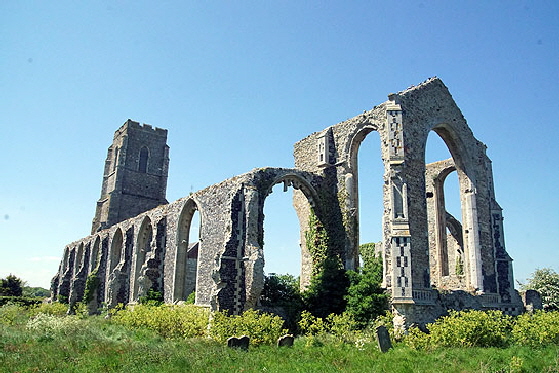|
|
||||||||||||||||||||||||||||||||||||||||||||||||||||||||||
|
Please sign my Guestbook and leave feedback |
||||||||||||||||||||||||||||||||||||||||||||||||||||||||||
|
Recent Additions |
||||||||||||||||||||||||||||||||||||||||||||||||||||||||||
|
|
||||||||||||||||||||||
|
Like coastal towns throughout England, however, Covehithe suffered catastrophic decline when the sea receded in the seventeenth century. Such a magnificent church was beyond the means of the parish to maintain and in 1672 it was permitted to build a much smaller church using materials from the existing one. This church very much reflected the changes not only in the wealth of the community but also in the dramatic change in the nature of religious mores. Where the old church was magnificent, the new one is a single-room “prayer barn” of studied austerity and irreproachable rectitude. Just to add to the bizarre incongruity of the whole scene, the “new” church is attached to the west tower of the old one: a tower higher than the rest of the church is long. The Churches Conservation Trust own the old church, including the tower, so its east wall is, as the Church Guide points out, a “party wall” and one that, moreover, causes damp within the church itself. Why should you come here? Well, it is a place of great English eccentricity and it is in a quite remote and breezy spot. Sometimes it is the “feel” of a place that is its greatest attraction and Covehithe is certainly one of those. I wouldn’t come here on a wet day but otherwise it a very enjoyable place to visit. Artists would love it. Parking is limited and if you park opposite the farm entrance (as I did) you risk the wrath of the farmers. Best avoided. |
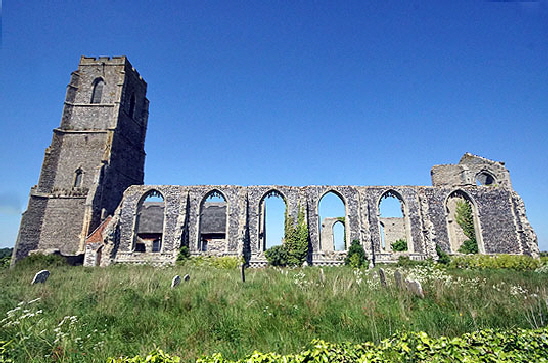 |
|||||||||||||||||||||||||||||||||
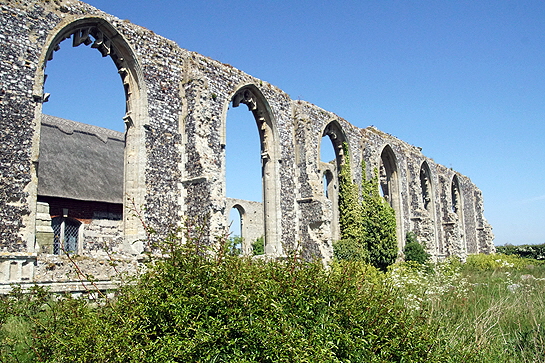 |
|||||||||||||||||||||||||||||||||
|
Left: Form the south you can see the little thatched “new” church nestling within the first two bays of the old one. Note the size of the tower looming above it. Right: The south side of the old church. You can see the remains of the Perpendicular style windows that would have filled its large window spaces. Suffolk was a very wealthy county in the late mediaeval period and its mercantile classes bequeathed the county a legacy of many magnificent Perpendicular style churches. See, for example, Long Melford. |
|||||||||||||||||||||||||||||||||
 |
|||||||||||||||||||||||||||||||||
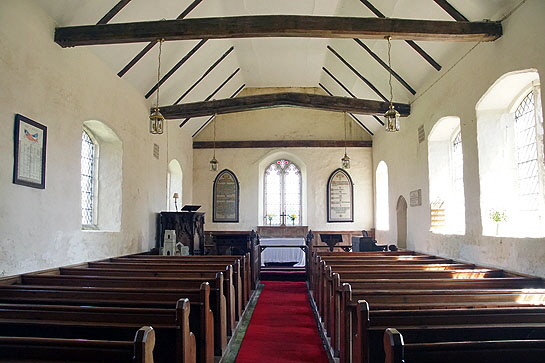 |
|||||||||||||||||||||||||||||||||
|
Left: I coined the word “prayer barn” for churches like the one at Covehithe: single-celled and severely functional. Built post-Reformation its only decorations are scriptural tracts and there was no provision for any separation of clergy from congregation. This was a space for God-fearing people with the focus on scripture and sin. No “church ales”, merrymaking or storage of produce in this holy space! In many ways Covehithe is a perfect demonstration of how cataclysmic were the changes in English Christianity. I am not much of one for ghastly pictures and statues of Virgins, Crucifixions and Apostles myself but it is easy to see how the colour and sense of awe was drained from our churches after the Reformation. It is easy to imagine the horror of the poorest parishioners who had the new austerity imposed upon them at a time when the church provided the only colour in their lives. Right: Looking towards the west. Note the damp west “party” wall! |
|||||||||||||||||||||||||||||||||
 |
|||||||||||||||||||||||||||||||||
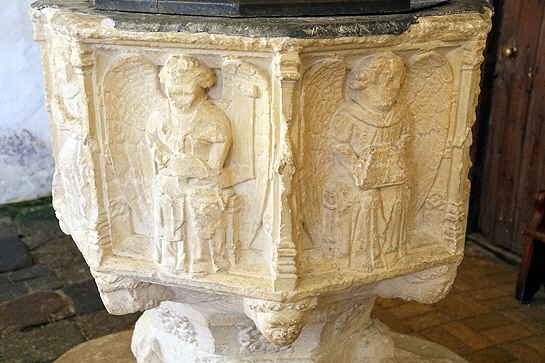 |
|||||||||||||||||||||||||||||||||
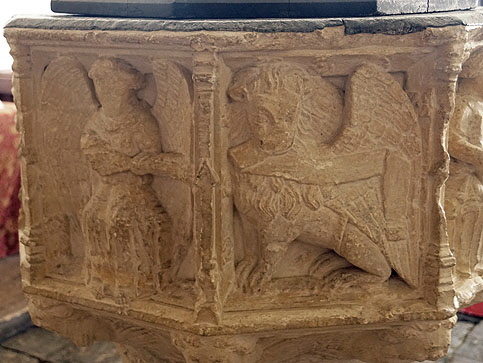 |
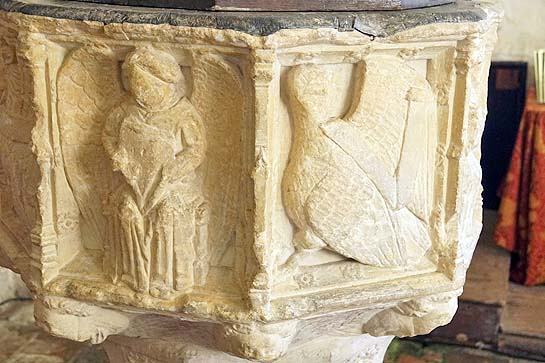 |
||||||||||||||||||||||||||||||||
|
Four Pictures Above: The church retained the original font from the old church. It has suffered some damage over the centuries so perhaps it didn’t fare well when the old church was falling into rack and ruin. By this time - the fifteenth century - the fashion in fonts, especially in East Anglia, had moved away from the grotesque or preoccupations with the act of baptism itself, into broader “good” religious imagery. So here we see apostles in their symbolic forms with angels and apostles. It’s all a bit boring really! |
|||||||||||||||||||||||||||||||||
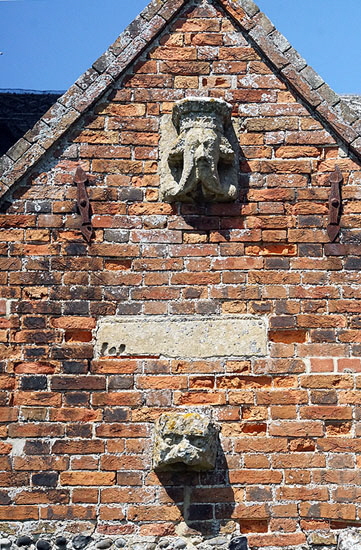 |
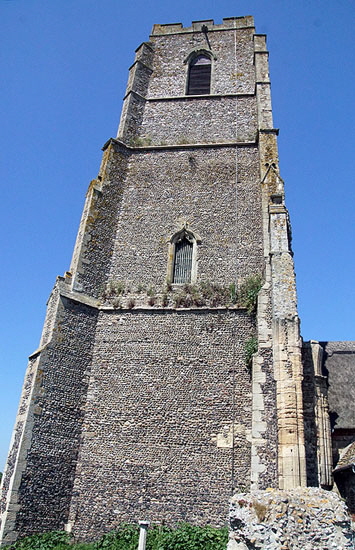 |
||||||||||||||||||||||||||||||||
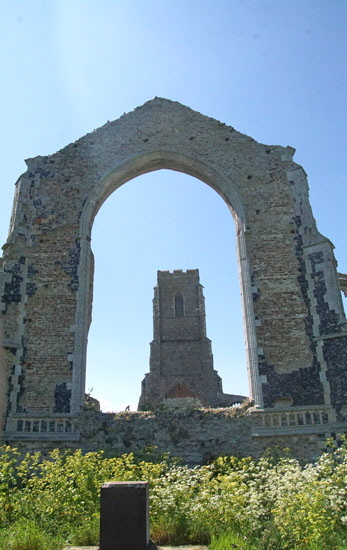 |
|||||||||||||||||||||||||||||||||
|
Left: The brick-built porch of the new church has preserved these two elements of the old. The top one is a rather odd grotesque figure that was obviously used to support a statue. It has a crown so it looks like a caricature of a king. The lower figure actually looks like a Norman corbel. Was it preserved within the old church as a remnant of an even earlier building? Centre: The large, rather forbidding, west tower from the south. Right: Looking through the old east end to the tower. This was clearly and east window of some magnificence. |
|||||||||||||||||||||||||||||||||
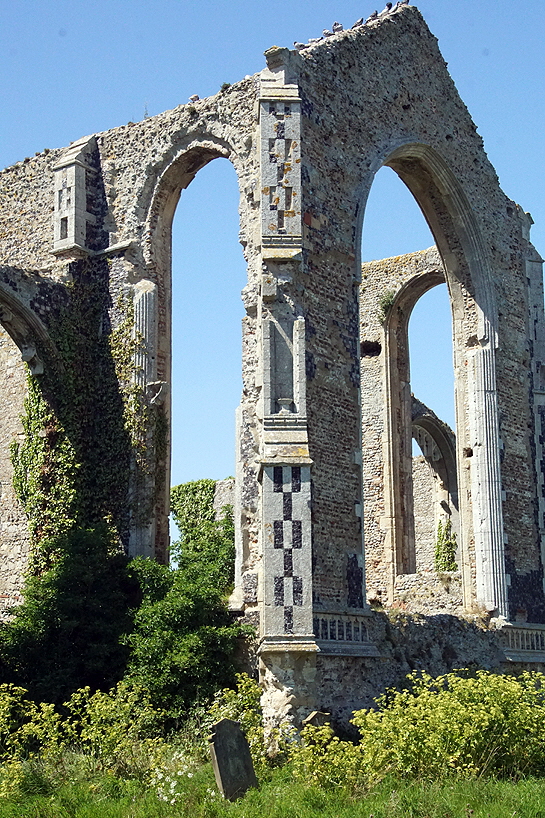 |
|||||||||||||||||||||||||||||||||
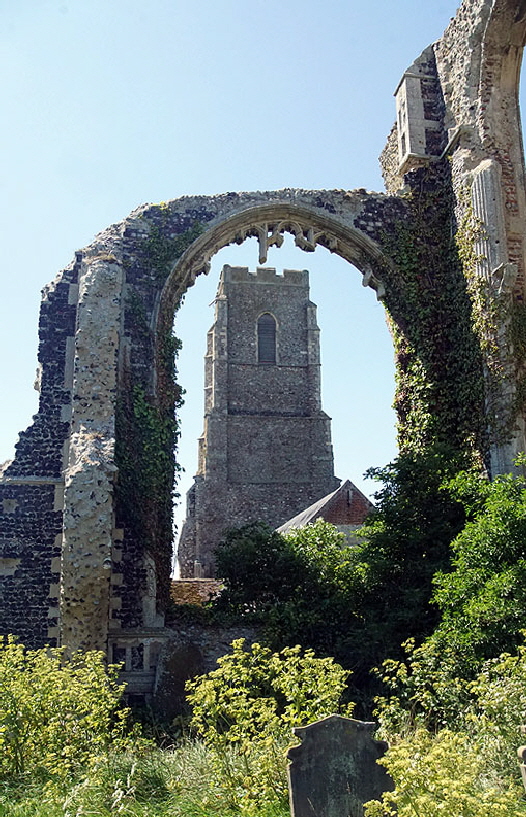 |
|||||||||||||||||||||||||||||||||
|
Left: The classic “artists view” through the ruined south west window of the old church to the tower behind. Right: You get some idea from this picture of the east end of the old church of how richly it was ornamented. The county was wealthy. The wool town of Lavenham, now a quaint mediaeval postcard-pretty tourist hotspot was then one of the wealthiest towns in England. Suffolk, however, was not rich in building materials . So Covehithe, like most Suffolk churches, relied on flint-faced rubble walls such as we see in the old Covehithe and thatched roofs such as we see in the new Covehithe. |
|||||||||||||||||||||||||||||||||
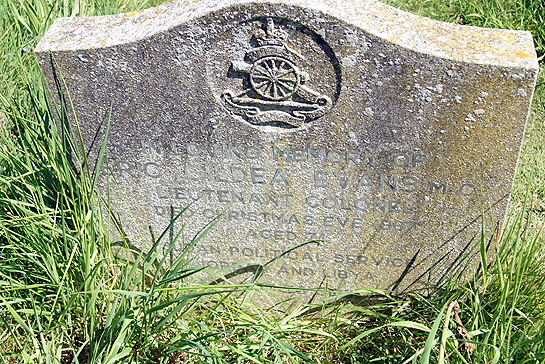 |
|||||||||||||||||||||||||||||||||
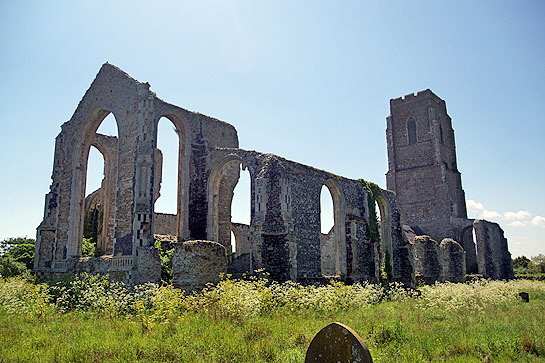 |
|||||||||||||||||||||||||||||||||
|
Left: The north side of the church. Photographers will know the problems of a midday sun: unnaturally blue skies with buildings totally in shadow! I’ve done my best with this one! Right: I spotted this gravestone for a Lieutenant-Colonel Eric Gildea Evans MC of the Royal Artillery. He died in 1967 and seemed to have done political service in the Sudan and Libya. His sounded an interesting life but I haven’t been able to find out anything more about him. |
|||||||||||||||||||||||||||||||||
|
Footnote |
|||||||||||||||||||||||||||||||||
|
One of the reasons we went out of our way to visit Covehithe is because of a limited edition print we have of a linocut by James Dodds. James was from a boatbuilding background but became a well-known artist, specialising (but not confined to) scenes from Essex and east Anglia. He has shown at the Royal Academy. Most of his pictures are of boats, boatbuilding or of ports so Covehithe is a rare exception for him. At last we’ve seen the real place! https://jamesdodds.co.uk/ |
|||||||||||||||||||||||||||||||||
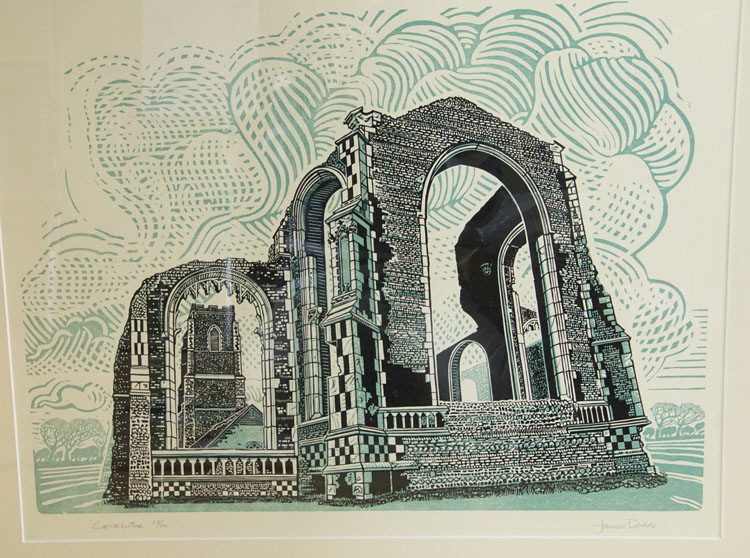 |
|||||||||||||||||||||||||||||||||
|
|
|||||||||||||||||||||||||||||||||
